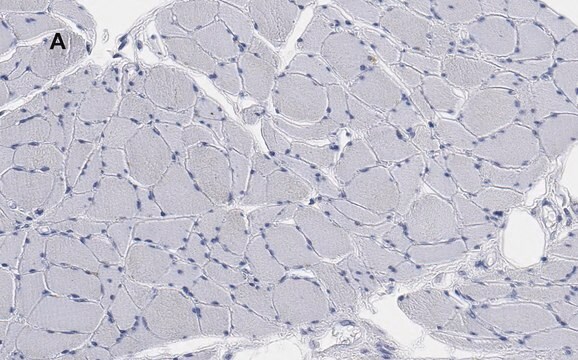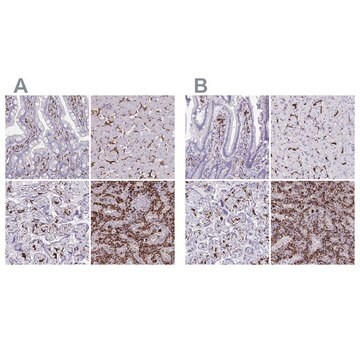Wichtige Dokumente
SAB4200707
Anti-Desmin antibody, Mouse monoclonal

clone DE-U-10, purified from hybridoma cell culture
Synonym(e):
Anti-DES
About This Item
Empfohlene Produkte
Antikörperform
purified from hybridoma cell culture
Qualitätsniveau
Antikörper-Produkttyp
primary antibodies
Klon
DE-U-10, monoclonal
Form
buffered aqueous solution
Mol-Gew.
antigen ~55 kDa
Speziesreaktivität
rat, rabbit, hamster, porcine, goat, bovine, chicken, toad, sheep, mouse, human
Erweiterte Validierung
independent
Learn more about Antibody Enhanced Validation
Konzentration
~1.0 mg/mL
Methode(n)
immunoblotting: 0.5-1 μg/mL using whole extract of mouse myoblast C2C12 cells
immunofluorescence: 2-5 μg/mL using mouse myoblast C2C12 cells
immunohistochemistry: 2.5-5 μg/mL using heat-retrieved formalin-fixed, paraffin-embedded Human Appendix
microarray: suitable
Isotyp
IgG1
UniProt-Hinterlegungsnummer
Versandbedingung
dry ice
Lagertemp.
−20°C
Posttranslationale Modifikation Target
unmodified
Angaben zum Gen
human ... DES(1674)
mouse ... Des(13346)
rat ... Des(64362)
Verwandte Kategorien
Allgemeine Beschreibung
Immunogen
Anwendung
- immunoblotting
- immunofluorescence
- immunohistochemistry
- microarray
Biochem./physiol. Wirkung
Physikalische Form
Haftungsausschluss
Sie haben nicht das passende Produkt gefunden?
Probieren Sie unser Produkt-Auswahlhilfe. aus.
Lagerklassenschlüssel
10 - Combustible liquids
Flammpunkt (°F)
Not applicable
Flammpunkt (°C)
Not applicable
Hier finden Sie alle aktuellen Versionen:
Analysenzertifikate (COA)
Die passende Version wird nicht angezeigt?
Wenn Sie eine bestimmte Version benötigen, können Sie anhand der Lot- oder Chargennummer nach einem spezifischen Zertifikat suchen.
Besitzen Sie dieses Produkt bereits?
In der Dokumentenbibliothek finden Sie die Dokumentation zu den Produkten, die Sie kürzlich erworben haben.
Kunden haben sich ebenfalls angesehen
Global Trade Item Number
| SKU | GTIN |
|---|---|
| SAB4200707-100UL | 4061838037749 |
Unser Team von Wissenschaftlern verfügt über Erfahrung in allen Forschungsbereichen einschließlich Life Science, Materialwissenschaften, chemischer Synthese, Chromatographie, Analytik und vielen mehr..
Setzen Sie sich mit dem technischen Dienst in Verbindung.









